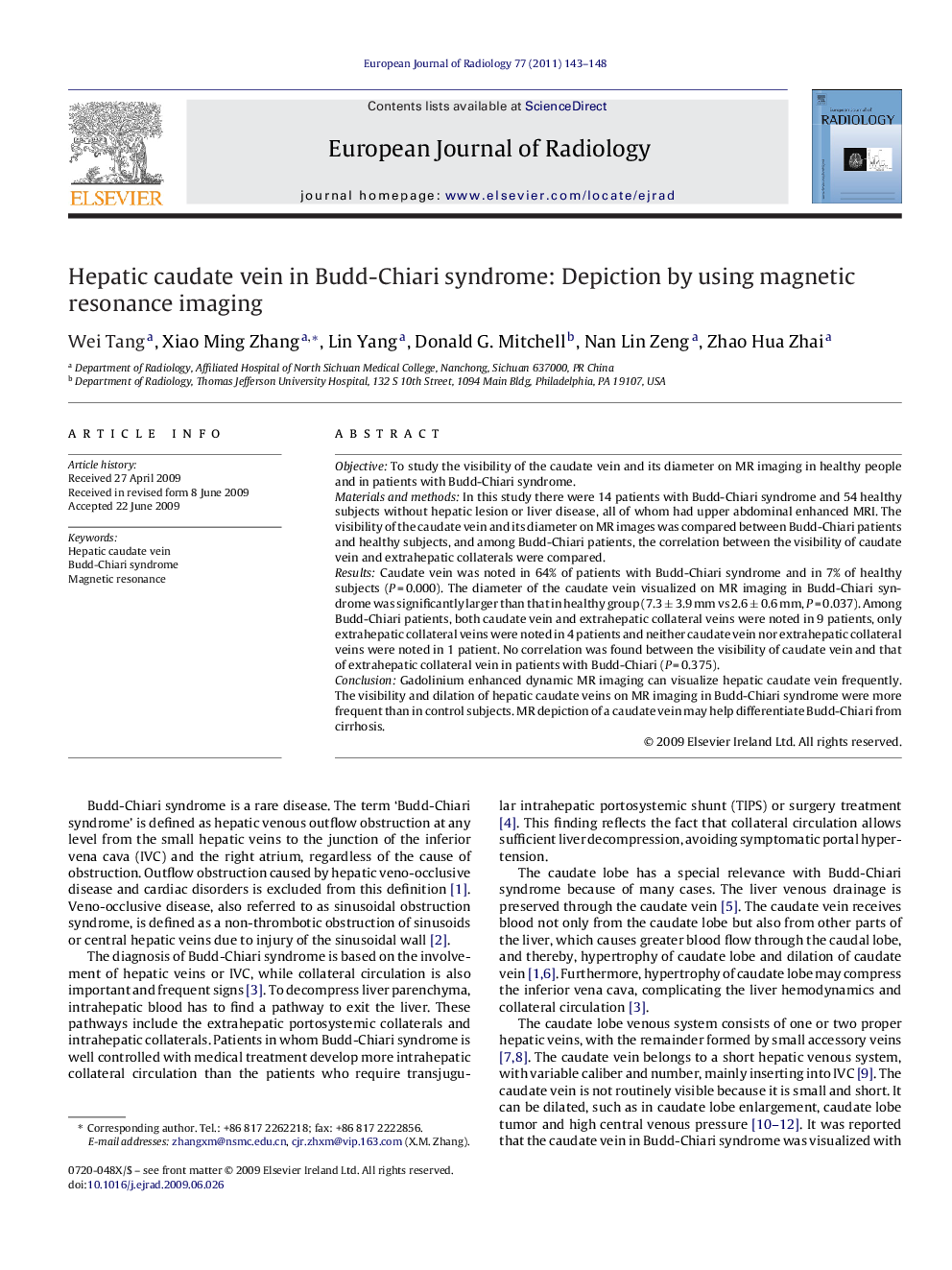| Article ID | Journal | Published Year | Pages | File Type |
|---|---|---|---|---|
| 4227366 | European Journal of Radiology | 2011 | 6 Pages |
ObjectiveTo study the visibility of the caudate vein and its diameter on MR imaging in healthy people and in patients with Budd-Chiari syndrome.Materials and methodsIn this study there were 14 patients with Budd-Chiari syndrome and 54 healthy subjects without hepatic lesion or liver disease, all of whom had upper abdominal enhanced MRI. The visibility of the caudate vein and its diameter on MR images was compared between Budd-Chiari patients and healthy subjects, and among Budd-Chiari patients, the correlation between the visibility of caudate vein and extrahepatic collaterals were compared.ResultsCaudate vein was noted in 64% of patients with Budd-Chiari syndrome and in 7% of healthy subjects (P = 0.000). The diameter of the caudate vein visualized on MR imaging in Budd-Chiari syndrome was significantly larger than that in healthy group (7.3 ± 3.9 mm vs 2.6 ± 0.6 mm, P = 0.037). Among Budd-Chiari patients, both caudate vein and extrahepatic collateral veins were noted in 9 patients, only extrahepatic collateral veins were noted in 4 patients and neither caudate vein nor extrahepatic collateral veins were noted in 1 patient. No correlation was found between the visibility of caudate vein and that of extrahepatic collateral vein in patients with Budd-Chiari (P = 0.375).ConclusionGadolinium enhanced dynamic MR imaging can visualize hepatic caudate vein frequently. The visibility and dilation of hepatic caudate veins on MR imaging in Budd-Chiari syndrome were more frequent than in control subjects. MR depiction of a caudate vein may help differentiate Budd-Chiari from cirrhosis.
